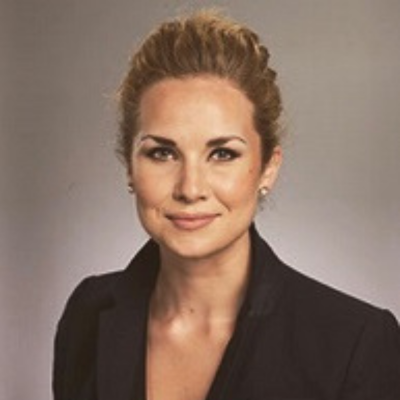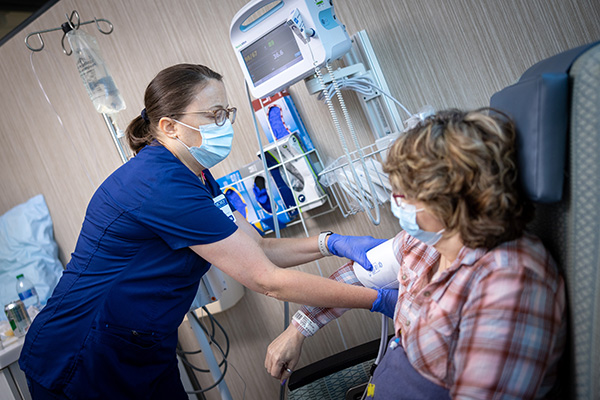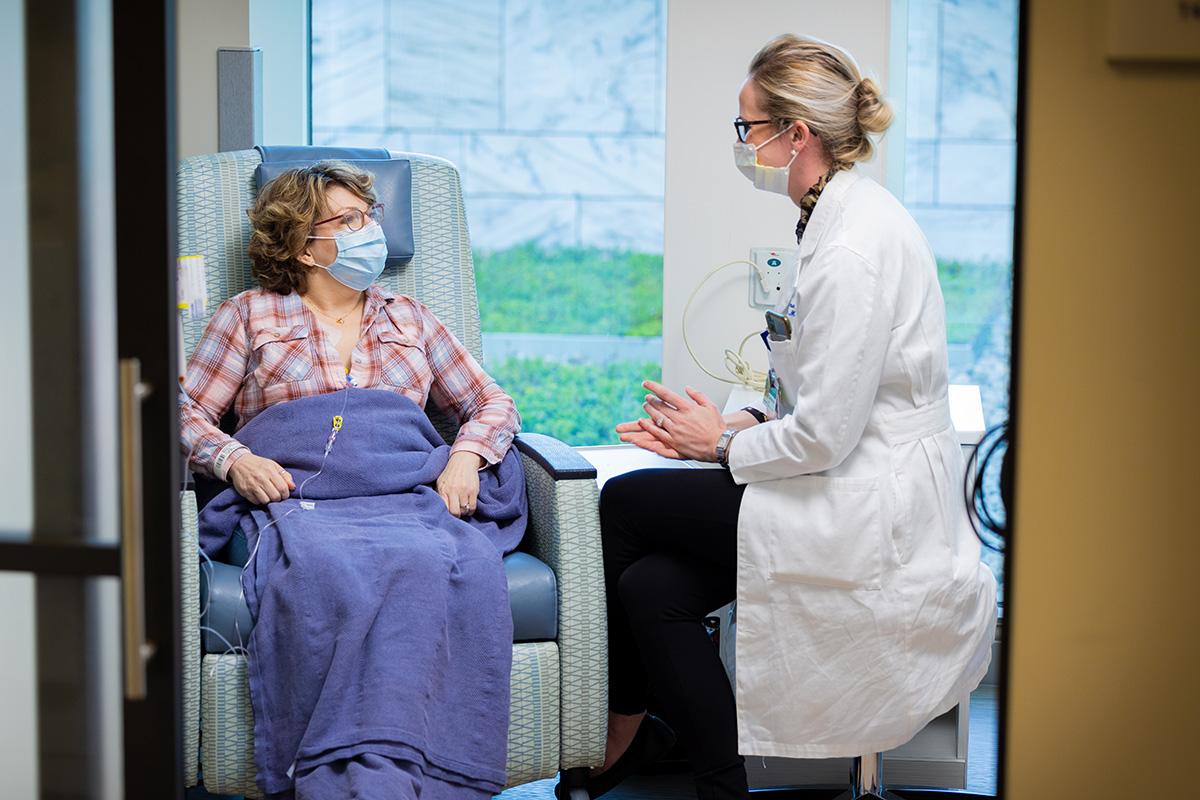The level of care that I’ve received is like none other. It’s phenomenal. All of the team is very attentive.
Natalie's Nurse Practitioner
-
Catherine Braga, MSN, AGACNP-BC Lead Nurse Practitioner, Phase I Unit

People don’t usually think of a car accident as a godsend. But for Natalie, of Birmingham, Alabama, that’s exactly how she sees it. “I was in a car accident,” she explains, “and they did a chest X-ray to make sure everything was okay. And in that X-ray, the radiologist located a spot on my lungs.” A follow-up revealed that Natalie had neuroendocrine carcinoid cancer.
A carcinoid tumor is a type of neuroendocrine tumor (NET) that grows from neuroendocrine cells found in organs throughout the body. These cells receive and send messages through hormones to help the body function.
Carcinoid tumors are rare: they affect an estimated 4 in 100,000 adults, and their cause is unknown. The National Cancer Institute says carcinoid tumors are most often found in the digestive tract, but those with a carcinoid tumor in the lungs, like Natalie, may have symptoms that include trouble breathing, chest pain, wheezing or coughing up blood.
Natalie’s only symptom was occasionally feeling a bit flushed. “Other than that,” she says, “something [was] growing in my chest area, almost the size of a golf ball, and I had no symptoms.” She adds, “It was quite shocking.”
Treatment Options

Surgery was able to remove about half of the tumor. Next, Natalie’s treatment included chemotherapy and radiation. After four months, her tumor was almost gone. “It was negligible, so I was sent on my way,” Natalie says. “About four months later, we discovered that it had metastasized to the liver.”
Four more months of chemotherapy followed. “That didn’t do anything,” says Natalie. “I had read every single thing that I could get my hands on about this type of cancer, so I had a really good idea that it wasn’t going to probably be a very great outcome.” In fact, she adds, she likely would have had “just months” to live.
Natalie’s oncologist in Alabama was out of options and Natalie felt overwhelmed. “It felt like the whole world was crashing in and I didn’t know where to turn or what to do next and we were just going one step at a time,” she says. “I was at the end of my treatment, the end of my rope, the end of my hope because this cancer is very rare and a lot of hospitals and research facilities don’t have information on it because there hasn’t been that many people who’ve gotten it.”
After exhausting the available FDA-approved treatments, Natalie and her husband, Bob, looked for clinical trials that might offer the hope Natalie badly needed.
A Clinical Trial Finally Offers Hope
Natalie had already visited Winship Cancer Institute of Emory University earlier in her cancer experience when she was considering proton radiation therapy. At Winship she learned that her tumor was not the typically slow-growing carcinoid, but in fact was growing relatively quickly.
Finding a trial treating the particular protein in Natalie’s cancer was a challenge. But Winship’s Phase 1 research team really helped. Natalie’s husband, Bob, says, “The program coordinator, Nina, spent a lot of time doing the legwork to find studies that potentially would match Natalie’s protein sequence and the other things that have to match in order for you to be accepted into a study. And the study she’s now in, I think there’s 110 people internationally that are in the study. She’s one of only three or four in the United States. That was a lot of legwork on Emory’s part and on Nina’s part to find that study for her.”
Winship offers patients the opportunity to enroll in a clinical trial. In 2022, Winship enrolled more than 700 people in over 300 interventional and therapeutic clinical trials.
Natalie was happy to have a “Plan B” in the clinical trial. But she had no idea what kind of outcome to expect from the trial, so didn’t get her hopes up too high. Ultimately, she has had an extremely positive outcome.
“Within a few short weeks of the trial, I had some miraculous results,” Natalie says. “In fact, the medical director said he’d never seen anything like it: 70% of the metastasized liver cancer has died off.” She adds, “So we are looking really good to continue on this trial.” Finding the trial for her particular cancer “was really exciting because it is pretty rare,” she says. “And to get the kind of results we got was life-changing, really.”
Natalie’s participation in a clinical trial offers access to an experimental treatment that is proving helpful for her. By participating she is likewise helping future patients who will benefit from her willingness to contribute toward advancing cancer care.
“Natalie is among the hundreds of patient heroes that come through our Phase 1 space to selflessly fight with us for the same cause,” says Catherine Braga, MSN, AGACNP-BC, the lead advance practice provider in the Phase 1 Clinical Trials Program and Ambulatory Infusion Center at Winship’s Clifton location. “By volunteering their time and participating in these trials, they are changing the face of cancer treatment.”
Describing the care she has received at Winship, Natalie says, “The level of care that I’ve been receiving is like none other. It’s phenomenal. All of the team is very attentive.” She says they review her results and she gets periodic scans “so that they’re able to go farther and make sure [the cancer] isn’t growing in another location and they have everything under wraps.” She adds, “They’re amazing.”
Care tailored to your needs
Care for patients with cancer at Winship includes leading cancer specialists collaborating across disciplines to tailor treatment plans to each patient’s needs; innovative therapies and clinical trials; comprehensive patient and family support services; and a care experience aimed at easing the burden of cancer.

